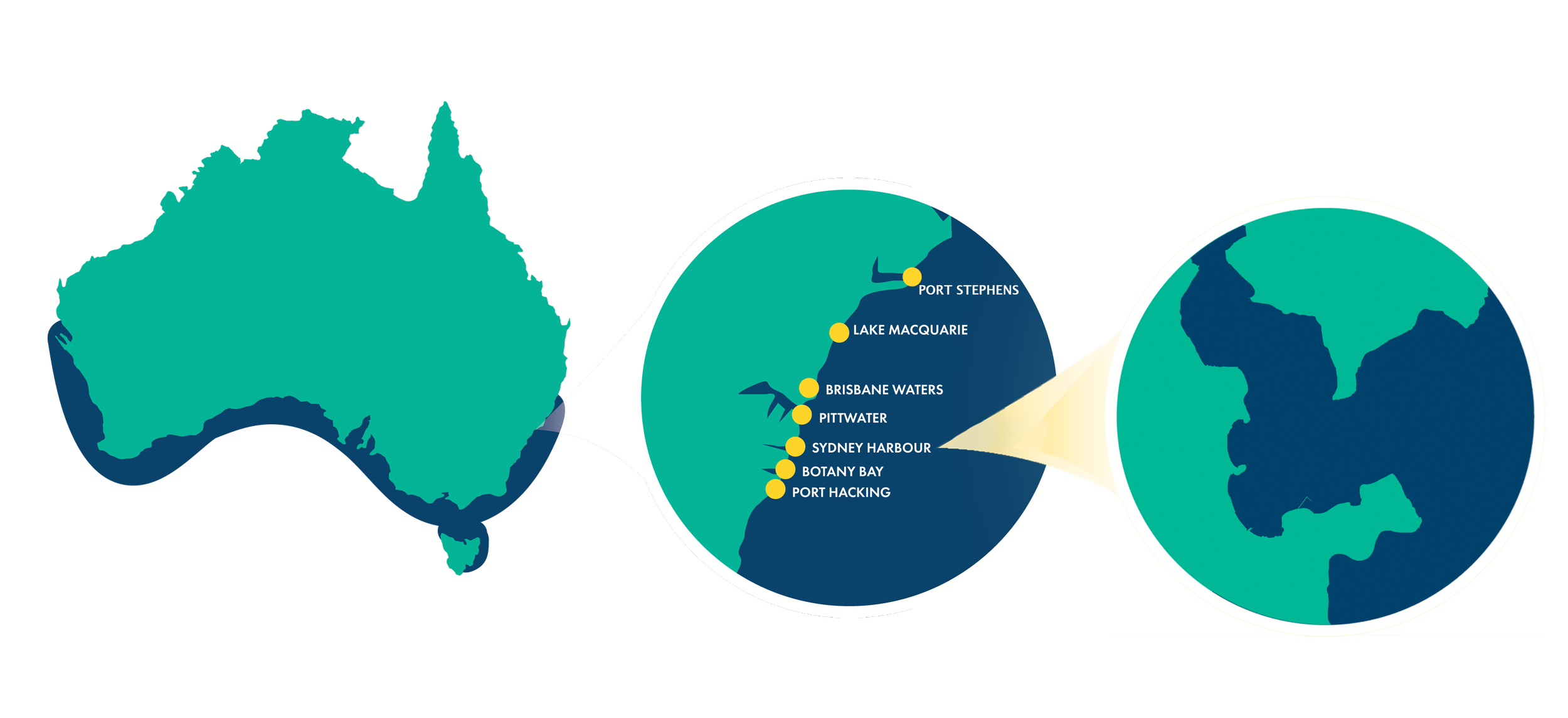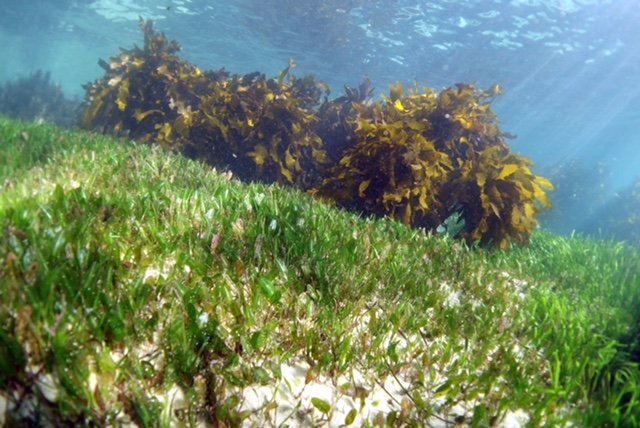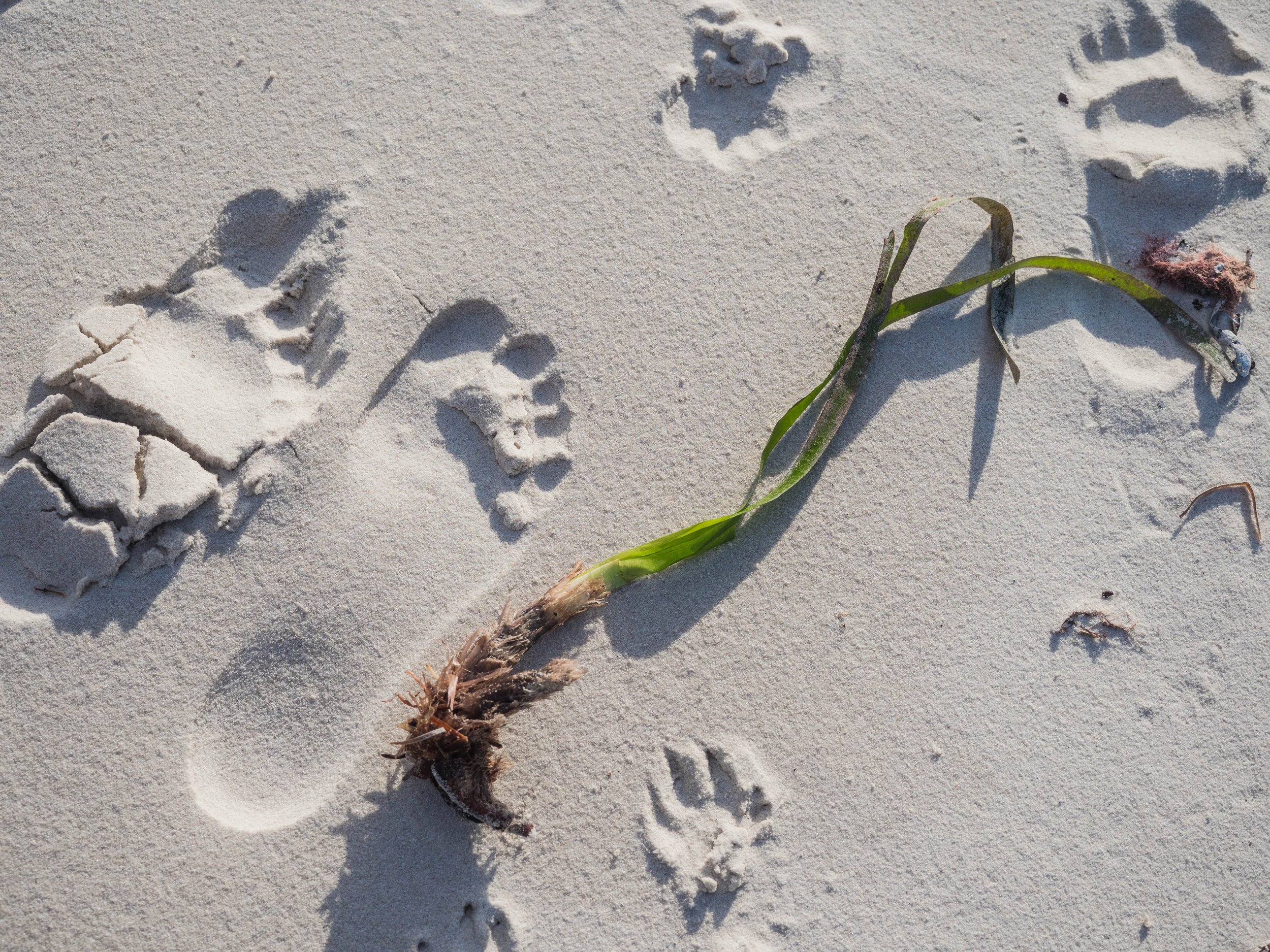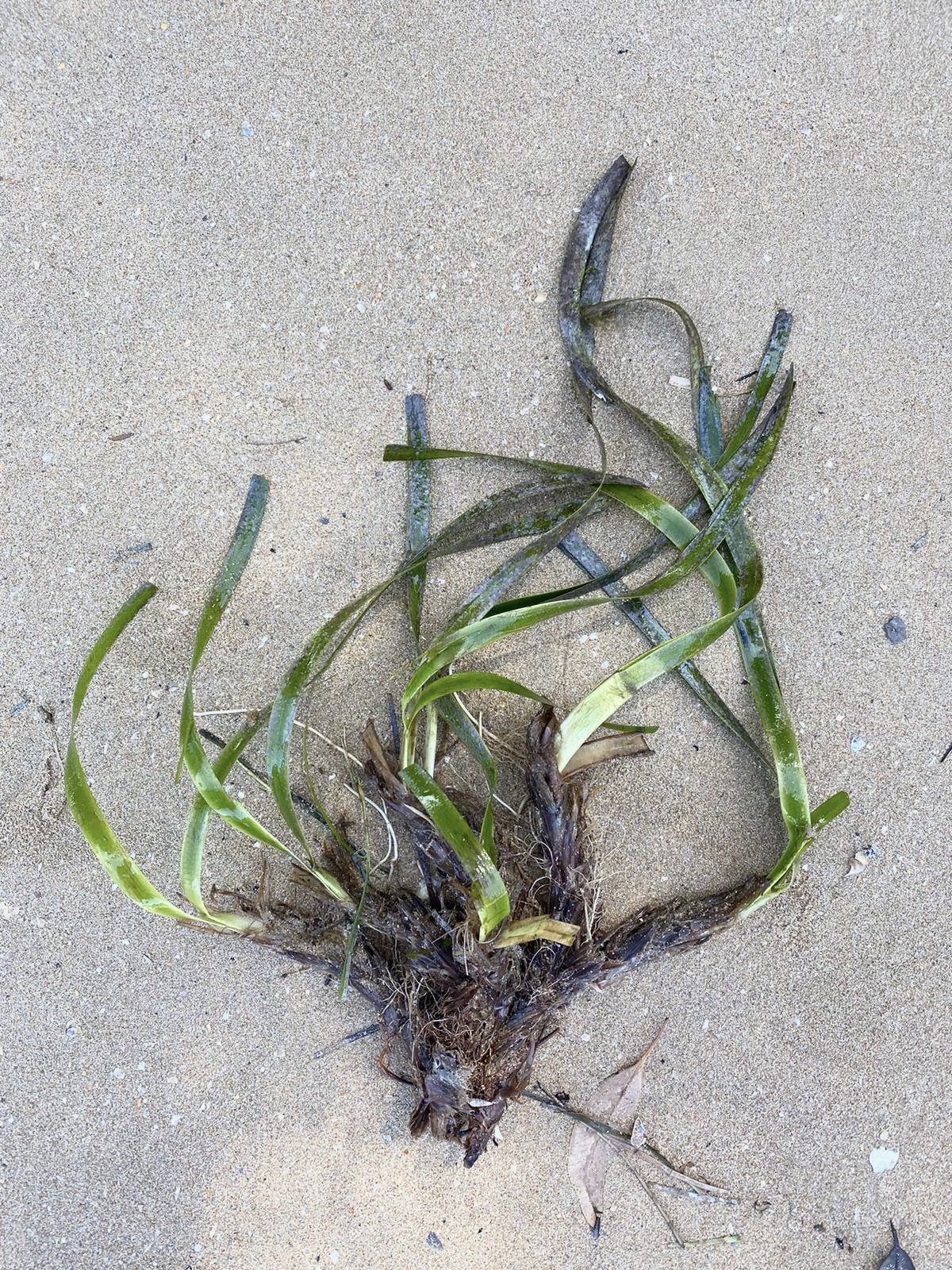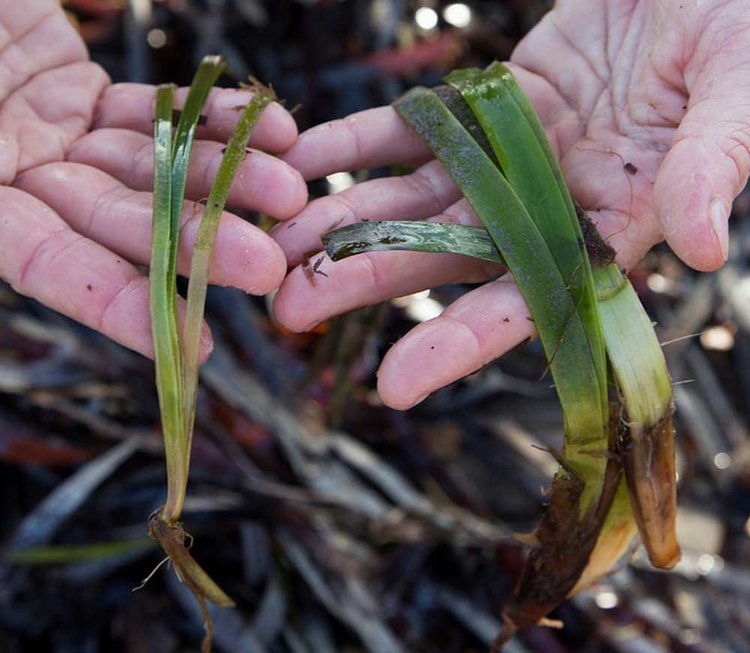Sydney Harbour
Balmoral Beach, Mosman
Sydney Harbour’s First Posidonia Restoration Project . . .
Operation Posidonia has launched in Sydney Harbour, in collaboration with Mosman Council.
Sydney Harbour is Australia’s most urbanised estuary with over 50% of the shoreline having been modified. Despite this, the harbor’s marine life persists, with kelp forests, sponge gardens and seagrass meadows all found beneath the surface. These habitats are home to a diversity of life from seahorses to seals.
Posidonia australis is Endangered in Sydney Harbour. Declines of seagrass in this estuary have been among the fastest in NSW.
Posidonia meadows are very scarce in Sydney Harbour compared to their historical extent. Because of this, restoration is particularly challenging as there isn’t very much donor material left. To overcome this, we need to help of many hands to collect enough Posidonia fragments to undertake restoration.
We will be undertaking Sydney Harbour’s first Posidonia restoration – a pilot study in Balmoral Beach.
Seagrass meadows in Manly Cove, where declines of seagrass due to swing moorings has been extensive. Photo: John Turnbull
Map showing the location of Balmoral in Sydney Harbour on the NSW coastline
The marine biodiversity of Sydney Harbour - Photos by John Turnbull
The Problem
Posidonia & Swing Moorings
Boat moorings are one of the most obvious current disturbances to seagrass habitats, as the sheltered bays where seagrass naturally thrives are also the most ideal locations for people to moor their boats.
The problem with traditional, fixed block-and-chain boat moorings is that they scar the seafloor and remove seagrass shoots, causing the formation of bare patches that fragment the meadow and destabilise the sediment. As the mooring scars get larger, bare patches start to merge and this leads to further loss of Posidonia.
Mapping has shown that mooring scars can be very large, form quickly and can take decades to recover fully once a mooring is removed. Across NSW, currently leased moorings are causing losses of around 130,000 m2 (that is more than 26 football fields!), but the real loss is even greater, as many estuaries contain old scars that remain long after the relocation of moorings.
Traditional swing moorings disturb not only seagrasses but also other organisms living in the seafloor, leading to bare patches. Photo credit: Kingsley Griffin
The Solution
Environmentally friendly moorings
&
Posidonia Restoration
The Solution
Environmentally friendly moorings coupled with Posidonia Restoration
The only way to prevent damage to the marine environment by boat moorings is to change their design, so that there are no components dragging along the seafloor.
In recent years, a variety of mooring designs have emerged that prevent chains dragging along the seafloor. These new types of moorings are collectively known as Environmentally Friendly Moorings (EFMs), and they are slowly replacing traditional block and chain moorings in many coastlines worldwide, but are not yet used extensively in New South Wales.
Diagram: EFM vs Traditional swing mooring
Once mooring chains are removed, however, the natural revegetation of bare patches by Posidonia can be very slow, especially when mooring scars have expanded and altered local hydrodynamics. In some places it could take over 20 years for a mooring scar to be revegetated by Posidonia naturally.
Our aim is to give nature a helping hand and promote the recovery of Posidonia by combining the restoration of Posidonia in old mooring scars where swing moorings have been removed.
Be a part of the Storm Squad
Collecting beach-cast fragments of Posidonia to use in restoration helps us restore meadows without damaging vulnerable populations. To do this, we need help from the local community to find washed up fragments before they dry out.
This exciting solution gives community members the opportunity to assist with marine conservation in a hands-on, meaningful way, all in the name of protecting the underwater world on their doorstep.
How to volunteer with Operation Posidonia in Sydney Harbour
What to look for?
Large amounts of Posidonia ‘wrack’ wash up on the shores of Sydney Harbour. Most of this wrack is made up of detached leaves which alone are not viable for restoration.
Posidonia fragments that are viable for restoration have two essential parts - a rhizome and healthy green leaves.
The rhizome is the underground stem, or ‘runner’, that stores energy. Green leafy shoots grow vertically upwards at 1-3 cm intervals along the rhizome. The rhizome looks brown and woody and is usually quite stiff to touch.
Most fragments will look like the one on the left below, with 1 or 2 shoots and a short rhizome. More rarely, we also find large fragments with multiple shoots. They are all great for restoration!
What about other species of seagrass?
Posidonia can sometimes be confused for Zostera, a common seagrass found in the waters of New South Wales. They look very similar, but there are a few key differences in their leaf size & shape. Zostera (left below) has narrow leaves (0.5cm wide) & Posidonia (right below) has wide leaves (1cm or more).
Left: Zostera. Right: Posidonia
Where and when should I search for fragments?
When looking for fragments, take note of the tide and wind conditions.
It is best to time your collection just after a morning high tide starts to recede, leaving Posidonia fragments washed up on the shore. The trick is getting to the fragments before they become too dry.
Posidonia australis anchors itself to the bottom using sturdy roots but can be uprooted by currents or strong winds. Often many fragments can be found just after rough coastal conditions such as storms, East Coast Lows, very windy days and during spring tides.
Wind direction best indicates which locations to go searching for fragments.
The densest meadows of Posidonia in the North Harbour area. These meadows and other smaller meadows around the harbour act as ‘source’ meadows of naturally-detached fragments.
When a strong north or north-easterly wind blows, you can expect to find Posidonia washed up along north-facing bays like Balmoral.
In a strong easterly wind go searching at Chowder Bay and surrounds.
In southerlies, Manly Cove, Little Manly and Fairlight are likely to collect dislodged Posidonia.
Where is the collection station?
You can drop off your collected fragments at Balmoral Baths - a collection station is on the left hand side of the baths, before the fishing wharf.
What happens to the fragments after I collect them?
Our team will collect your fragments weekly and move them to a temporary storage area. Not long after, we go diving at our restoration sites and secure the fragments to the seafloor using biodegradable jute mats and pegs. Within a few months fragments grow and make new shoots, forming the start of a recovering meadow.
Safety first!
There are many things that also wash up on beach that may sting, bite or cut, so it is a good idea to be aware of this when beachcombing. Most of these hazards can be managed by using common sense!
Bring along:
A damp bag/container to carry collected fragments
Sun protection (hat, sunscreen, sunglasses)
Gloves, such as gardening gloves, for searching through seagrass ‘wrack’. These will protect you from any sharps such as glass, or potentially harmful marine critters.
Permit information
The NSW Department of Primary Industries allows persons to remove up to 20 kg/ day of seagrass ‘wrack’ from beaches or the intertidal zone for personal use without a permit.
As this restoration is also part of a research project, we are also operating under Section 37 Fisheries Management Act Collection Permit PN20/452, which allows the permit holder (Professor Adriana Vergés) and additional people (i.e. volunteers/ citizen scientists) to collect detached seagrass shoots from the Sydney Harbour area, excluding Aquatic Reserves.
Operation Posidonia acknowledges the Borogegal and Cammeraigal People, the Traditional Custodians of Country on which we conduct our research for this project. We recognise their continuing connection to the land and waters, and thank them for protecting this coastline and its ecosystems for many generations. We extend these respects to Elders past and present, and to all First Nations people.


